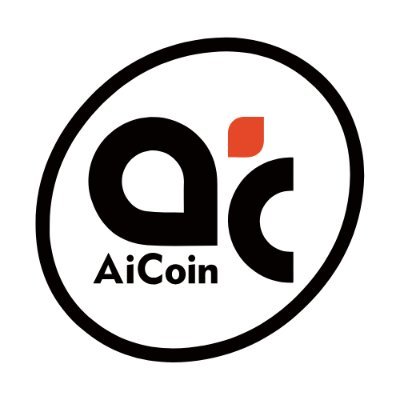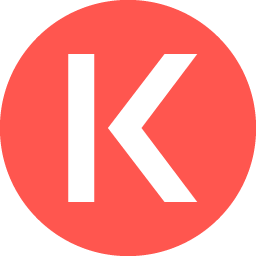Bitget: #4 mondial en volume de trading quotidien!
Part de marché du BTC62.91%
Nouveaux listings sur Bitget : Pi Network
BTC/USDT$85935.28 (+1.85%)Indice Fear and Greed38(Peur)
Altcoin Season Index:0(Saison du Bitcoin)
Tokens listés dans Pré-MarchéPAWS,WCTTotal des flux nets des ETF Spot Bitcoin +$1.5M (1j) ; -$771.3M (7j).Pack de bienvenue pour les nouveaux utilisateurs d'une valeur de 6200 USDT.Récupérer
Tradez à tout moment et en tout lieu grâce à l'application Bitget ! Télécharger maintenant
Bitget: #4 mondial en volume de trading quotidien!
Part de marché du BTC62.91%
Nouveaux listings sur Bitget : Pi Network
BTC/USDT$85935.28 (+1.85%)Indice Fear and Greed38(Peur)
Altcoin Season Index:0(Saison du Bitcoin)
Tokens listés dans Pré-MarchéPAWS,WCTTotal des flux nets des ETF Spot Bitcoin +$1.5M (1j) ; -$771.3M (7j).Pack de bienvenue pour les nouveaux utilisateurs d'une valeur de 6200 USDT.Récupérer
Tradez à tout moment et en tout lieu grâce à l'application Bitget ! Télécharger maintenant
Bitget: #4 mondial en volume de trading quotidien!
Part de marché du BTC62.91%
Nouveaux listings sur Bitget : Pi Network
BTC/USDT$85935.28 (+1.85%)Indice Fear and Greed38(Peur)
Altcoin Season Index:0(Saison du Bitcoin)
Tokens listés dans Pré-MarchéPAWS,WCTTotal des flux nets des ETF Spot Bitcoin +$1.5M (1j) ; -$771.3M (7j).Pack de bienvenue pour les nouveaux utilisateurs d'une valeur de 6200 USDT.Récupérer
Tradez à tout moment et en tout lieu grâce à l'application Bitget ! Télécharger maintenant



Prix de SolayerLAYER
Listé
Devise de cotation:
EUR
€1.82+4.12%1D
Convertisseur LAYER vers EUR
LAYER
EUR
1 LAYER = 0.00 EUR
Bitget offre les frais de trading les plus bas parmi les principales plateformes d'échange. Plus votre niveau VIP est élevé, plus les frais sont avantageux.
Prix
TradingView
Capitalisation
Graphique de prix Solayer (LAYER/EUR)
Dernière mise à jour : 2025-04-15 09:52:29(UTC+0)
Capitalisation boursière:€381,674,753.51
Capitalisation entièrement diluée:€381,674,753.51
Volume (24h):€90,933,012.23
Vol. (24h) / Cap. boursière:23.82%
Haut (24h):€1.8
Bas (24h):€1.68
Record historique (ATH):€1.82
Plus bas niveau historique:€0.5280
Offre en circulation:210,000,000 LAYER
Offre totale:
1,000,000,000LAYER
Taux de circulation:21.00%
Offre maximale:
--LAYER
Prix en BTC:0.{4}2401 BTC
Prix en ETH:0.001257 ETH
Prix avec la capitalisation du BTC:
€7,156.43
Prix avec la capitalisation de l'ETH:
€831.11
Contrats:
LAYER4...TwY2Yzc(Solana)
Plus
Que pensez-vous de Solayer aujourd'hui ?
Remarque : ces informations sont données à titre indicatif.
Rapport d'analyse IA sur Solayer
Points clés du marché crypto aujourd’huiVoir le rapport
Prix Solayer du jour en EUR
Le prix en temps réel de Solayer est de €1.82 EUR aujourd'hui, avec une capitalisation boursière de €381.67M. Le prix de Solayer a augmenté de 4.12% au cours des dernières 24 heures, et le volume de trading sur 24 heures est de €90.93M. Le taux de conversion LAYER/EUR (Solayer vers EUR) est mis à jour en temps réel.
Historique des prix de Solayer (EUR)
Le prix de Solayer enregistre +145.48% sur un an. Le prix le plus élevé de LAYER en EUR au cours de l'année écoulée est de €1.82 et le prix le plus bas de LAYER en EUR au cours de l'année écoulée est de €0.5280.
HeureVariation de prix (%) Prix le plus bas
Prix le plus bas Prix le plus élevé
Prix le plus élevé 
 Prix le plus bas
Prix le plus bas Prix le plus élevé
Prix le plus élevé 
24h+4.12%€1.68€1.8
7d+45.72%€1.19€1.82
30d+66.34%€0.8109€1.82
90d+145.76%€0.5280€1.82
1y+145.48%€0.5280€1.82
Tous les temps+127.58%€0.5280(2025-02-18, il y a 56 jour(s) )€1.82(2025-04-13, Hier )
Quel est le prix le plus élevé de Solayer ?
Le record historique (ATH) de Solayer en EUR est de €1.82, enregistré le 2025-04-13. Par rapport à l'ATH de Solayer, le prix actuel de Solayer est inférieur de 0.33%.
Quel est le prix le plus bas de Solayer ?
Le plus bas niveau historique (ATL) de Solayer en EUR est de €0.5280, enregistré le 2025-02-18. Par rapport à l'ATL de Solayer, le prix actuel de Solayer est supérieur de 244.21%.
Prédiction de prix de Solayer
Quel est le bon moment pour acheter LAYER ? Dois-je acheter ou vendre LAYER maintenant ?
Lorsque vous décidez d'acheter ou de vendre LAYER, vous devez d'abord tenir compte de votre stratégie de trading. L'activité de trading des traders à long terme sera également différente de celle des traders à court terme. L'analyse technique Bitget de LAYER peut vous fournir une référence pour le trading.
Selon l'analyse technique de LAYER (4h), le signal de trading est Achat fort.
Selon l'analyse technique de LAYER (1j), le signal de trading est Achat fort.
Selon l'analyse technique de LAYER (1w), le signal de trading est Achat fort.
Quel sera le prix de LAYER en 2026 ?
En se basant sur le modèle de prédiction des performances historiques de LAYER, le prix de LAYER devrait atteindre €1.58 en 2026.
Quel sera le prix de LAYER en 2031 ?
En 2031, LAYER devrait voir son prix augmenter de +41.00%. D'ici la fin de l'année 2031, LAYER devrait voir son prix atteindre €5.26, avec un ROI cumulé de +206.63%.
FAQ
Quel est le prix actuel de Solayer ?
Le prix en temps réel de Solayer est €1.82 (LAYER/EUR) avec une capitalisation actuelle de €381,674,753.51 EUR. La valeur de Solayer connaît des fluctuations fréquentes en raison de l'activité continue, 24 heures sur 24 et 7 jours sur 7, du marché des cryptomonnaies. Le prix en temps réel de Solayer et ses données historiques sont disponibles sur Bitget.
Quel est le volume de trading sur 24 heures de Solayer ?
Au cours des dernières 24 heures, le volume de trading de Solayer est de €90.93M.
Quel est le record historique de Solayer ?
Le record historique de Solayer est de €1.82. Il s'agit du prix le plus élevé de Solayer depuis son lancement.
Puis-je acheter Solayer sur Bitget ?
Oui, l'achat de Solayer est actuellement disponible sur la plateforme d'échange centralisée Bitget. Pour des instructions plus détaillées, pensez à consulter notre guide pratique Comment acheter solayer .
Puis-je gagner des revenus réguliers en investissant dans Solayer ?
Bien entendu, Bitget fournit une plateforme de trading de stratégie, avec des bots de trading intelligents permettant d'automatiser vos trades et d'engranger des bénéfices.
Où puis-je acheter des Solayer au meilleur prix ?
Nous avons le plaisir d'annoncer que plateforme de trading de stratégie est désormais disponible sur la plateforme d'échange Bitget. Bitget offre les frais de trading les plus bas du secteur ainsi qu'une profondeur importante afin d'assurer des investissements rentables aux traders.
Actualités Solayer
Afficher plus
Mises à jour Solayer
Marché Solayer
Avoirs Solayer par concentration
Baleines
Investisseurs
Particuliers
Adresses Solayer par durée de détention
Holders
Cruisers
Traders
Graphique en temps réel du prix de coinInfo.name (12)

Prix Solayer mondiaux
Combien vaut actuellement Solayer dans d'autres devises ? Dernière mise à jour : 2025-04-15 09:52:29(UTC+0)
LAYER en MXN
Mexican Peso
$41.35LAYER en GTQGuatemalan Quetzal
Q15.9LAYER en CLPChilean Peso
$1,997.64LAYER en HNLHonduran Lempira
L53.42LAYER en UGXUgandan Shilling
Sh7,558.23LAYER en ZARSouth African Rand
R38.73LAYER en TNDTunisian Dinar
د.ت6.19LAYER en IQDIraqi Dinar
ع.د2,699.85LAYER en TWDNew Taiwan Dollar
NT$66.93LAYER en RSDSerbian Dinar
дин.212.87LAYER en DOPDominican Peso
$126.2LAYER en MYRMalaysian Ringgit
RM9.09LAYER en GELGeorgian Lari
₾5.67LAYER en UYUUruguayan Peso
$88.55LAYER en MADMoroccan Dirham
د.م.19.1LAYER en OMROmani Rial
ر.ع.0.79LAYER en AZNAzerbaijani Manat
₼3.5LAYER en KESKenyan Shilling
Sh267.22LAYER en SEKSwedish Krona
kr20.07LAYER en UAHUkrainian Hryvnia
₴85.09- 1
- 2
- 3
- 4
- 5
Comment acheter Solayer(LAYER)

Créez votre compte Bitget gratuitement
Inscrivez-vous sur Bitget avec votre adresse e-mail/numéro de téléphone portable et créez un mot de passe robuste pour sécuriser votre compte.

Vérifiez votre compte
Vérifiez votre identité en saisissant vos informations personnelles et en téléchargeant une photo d'identité valide.

Convertir Solayer en LAYER
Choisissez parmi les cryptomonnaies à trader sur Bitget.
En savoir plusTrader des Futures perpétuels LAYER
Après vous être inscrit avec succès sur Bitget et avoir acheté des USDT ou des LAYER, vous pouvez commencer à trader des produits dérivés, y compris des Futures LAYER, et à trader sur marge pour augmenter vos revenus.
Le prix actuel de LAYER est de €1.82, avec une variation de prix sur 24 heures de . Les traders peuvent tirer profit d'une position Futures LAYER long ou short.
Rejoignez le copy trading de LAYER en suivant des traders experts.
Après vous être inscrit sur Bitget et avoir réussi à acheter des USDT ou des LAYER, vous pouvez également vous lancer dans le copy trading en suivant des traders experts.
Nouveaux listings sur Bitget
Nouveaux listings
Acheter plus
Où puis-je acheter Solayer (LAYER) ?
Achetez des cryptos sur l'application Bitget
Inscrivez-vous en quelques minutes pour acheter des cryptos par carte ou virement bancaire.
Section vidéo – vérifier son identité rapidement

Comment vérifier son identité sur Bitget et se protéger contre les fraudes
1. Connectez-vous à votre compte Bitget.
2. Si vous êtes nouveau sur Bitget, consultez notre guide sur comment créer un compte.
3. Survolez l'icône de votre profil, cliquez sur "Non vérifié" puis sur "Vérifier".
4. Choisissez le pays ou région d'émission de votre pièce d'identité et votre type de document, puis suivez les instructions.
5. Sélectionnez "Vérification mobile" ou "PC" selon votre préférence.
6. Saisissez vos informations personnelles, présentez une copie de votre pièce d'identité et prenez un selfie.
7. Enfin, soumettez votre demande pour terminer la vérification de l'identité.
Les investissements en cryptomonnaies, y compris l'achat de Solayer en ligne sur Bitget, sont soumis au risque du marché. Bitget fournit des moyens faciles et pratiques pour vous d'acheter des Solayer, et nous faisons de notre mieux pour informer pleinement nos utilisateurs sur chaque cryptomonnaie que nous offrons sur la plateforme d'échange. Toutefois, nous ne sommes pas responsables des résultats qui pourraient découler de votre achat de Solayer. Cette page et toute information qui s'y trouve ne constituent pas une recommandation d'une quelconque cryptomonnaie.
Convertisseur LAYER vers EUR
LAYER
EUR
1 LAYER = 1.82 EUR
Bitget offre les frais de trading les plus bas parmi les principales plateformes d'échange. Plus votre niveau VIP est élevé, plus les frais sont avantageux.
Notes Solayer
Note moyenne de la communauté
4.4
Ce contenu est uniquement destiné à des fins d'information.
Bitget Insights
Tswar
8h
Why Polygon (MATIC) is Set to Dominate the Future of Ethereum Scaling and Web3
As the cryptocurrency landscape continues to evolve, Polygon (MATIC) has emerged as one of the most promising projects, positioning itself as a leading solution for Ethereum’s scalability challenges. With its ability to drastically improve transaction speed, reduce costs, and enable a wide range of decentralized applications (dApps), Polygon is poised to play a pivotal role in the future of Ethereum and the broader Web3 ecosystem. In this article, we’ll explore why Polygon (MATIC) is a solid bet for those looking to capitalize on the growth of blockchain technology and decentralized finance (DeFi).
1. Ethereum’s Scalability Solution: Polygon as Layer 2
Ethereum is the backbone of decentralized applications, decentralized finance (DeFi), and NFTs. However, it suffers from high gas fees and slow transaction speeds, especially during periods of high demand. This is where Polygon comes in.
Polygon is the leading Layer 2 scaling solution for Ethereum, designed to solve the network's scalability issues while maintaining its security and decentralization. By processing transactions off-chain and using its unique Proof-of-Stake (PoS) consensus mechanism, Polygon enables Ethereum to handle thousands of transactions per second (TPS), far beyond Ethereum’s native capacity.
As Ethereum continues to dominate the decentralized space, Polygon’s role as a scalability solution will only grow. This makes Polygon an essential part of Ethereum’s future, ensuring it can scale efficiently while still offering the security that makes Ethereum a leader in the blockchain space.
2. Major Partnerships and Growing Adoption
Polygon’s growth isn’t just theoretical — it’s being fueled by real-world adoption and strategic partnerships with some of the biggest names in both the crypto world and traditional industries. Companies like Nike, Starbucks, Reddit, and Meta (formerly Facebook) are already integrating Polygon into their platforms, especially in areas like NFTs, loyalty programs, and Web3 applications.
These partnerships are particularly important because they validate Polygon’s use case and utility in the real world. For example, Reddit’s adoption of Polygon to scale its Community Points system highlights how blockchain can be used for real-world applications, providing users with decentralized rewards.
Furthermore, Polygon’s adoption in the DeFi ecosystem is significant. Leading decentralized applications (dApps) like Aave, Uniswap, and SushiSwap have launched on Polygon, leveraging its low fees and fast transactions. This growing ecosystem attracts more developers and users, further solidifying Polygon’s position as a go-to platform for Ethereum scaling.
3. Fast Transactions and Low Fees: A Game-Changer for DeFi and NFTs
Polygon’s ability to offer low fees and fast transaction speeds is one of the most compelling reasons to be bullish on the project. As Ethereum continues to face congestion and high gas fees, Polygon’s Layer 2 solution provides a much-needed alternative.
For decentralized applications and users, high gas fees can be a barrier to entry, especially for smaller transactions. With Polygon, transactions are processed at a fraction of the cost, and finality occurs within seconds. This makes Polygon a preferred platform for dApps, DeFi protocols, and NFT projects that need to offer an affordable and efficient user experience.
Not only does this attract users, but it also creates an economic model that’s sustainable for businesses and developers in the space. As more dApps migrate to Polygon for its scalability and low-cost transactions, the demand for the MATIC token increases, contributing to its value proposition.
4. Polygon’s Technological Innovations: Advancing Blockchain Solutions
Polygon’s technology doesn’t stop at scaling Ethereum. The platform is continuously evolving with innovative solutions that further enhance its utility and performance.
Polygon SDK: Polygon offers a powerful Software Development Kit (SDK) that allows developers to build their own customizable blockchains compatible with Ethereum. This flexibility enables a wide variety of use cases, from gaming to enterprise solutions and everything in between.
Polygon Hermez (zk-Rollups): Polygon’s acquisition of Hermez brings zk-rollups (zero-knowledge rollups) to the platform, a highly scalable solution that reduces transaction costs and improves throughput on Ethereum without compromising security.
Polygon Avail and Supernets: Polygon is also developing Polygon Avail, a protocol that enhances data availability for decentralized networks. Supernets, another new initiative, enables developers to create their own sovereign blockchains that are still interoperable with Polygon. These innovations ensure that Polygon remains a flexible and scalable solution for various decentralized applications.
5. A Thriving Developer Community and Ecosystem Growth
One of the key indicators of Polygon’s long-term success is its active developer community. The more developers building on Polygon, the more innovative dApps and protocols will emerge, driving the growth of the ecosystem. Polygon’s ecosystem now includes over 3,000 dApps, with more being added each day.
This ecosystem growth is vital because it creates a network effect — the more users and developers Polygon attracts, the more valuable the network becomes, creating a self-reinforcing cycle of growth. This active ecosystem positions Polygon to play a central role in the broader Web3 movement, which is expected to disrupt traditional industries and create a more decentralized, user-controlled internet.
6. A Strategic Vision for Web3 and the Future
Polygon’s vision extends beyond just Ethereum scaling. It aims to become a key player in the Web3 movement, enabling a more decentralized and user-owned internet. With partnerships with major players like Meta and Reddit, Polygon is helping drive adoption of decentralized technologies among the mainstream.
As the adoption of Web3 grows, the demand for blockchain infrastructure will increase, and Polygon’s ability to offer scalable, secure, and affordable solutions will make it a foundational platform for the future digital economy. Whether it’s for NFTs, decentralized finance, gaming, or social platforms, Polygon is well-positioned to provide the tools needed to enable this transformation.
7. Strong Market Performance and Investor Confidence
Polygon’s market performance has shown resilience and growth. The price of the MATIC token has consistently outperformed many other altcoins, reflecting strong demand for its utility and its growing role in the blockchain space. As more DeFi applications, NFT projects, and businesses adopt Polygon, the value of its native token, MATIC, is likely to rise in tandem.
Moreover, Polygon’s liquidity and high TVL (Total Value Locked) in DeFi projects ensure that it remains a highly liquid and attractive investment option for those looking to gain exposure to the growing blockchain ecosystem.
Conclusion: Why Polygon (MATIC) is the Altcoin to Watch
Polygon’s combination of scalability, low fees, robust partnerships, and technological innovation positions it as one of the most promising altcoins in the blockchain space. With Ethereum continuing to dominate the decentralized ecosystem, Polygon’s role as a Layer 2 scaling solution is crucial to supporting the growth of DeFi, NFTs, and Web3 applications.
As Polygon continues to expand its ecosystem, improve its technology, and form strategic partnerships, it is well-positioned for long-term growth and adoption. For investors and users alike, Polygon (MATIC) represents an exciting opportunity to participate in the future of Ethereum and decentralized applications.
$POL
GAS+10.68%
MAJOR+2.35%

Aicoin-EN-Bitcoincom
10h
Ethereum Dominates Dapp Revenue in Q1 2025 Raking in Over $1 Billion
Ethereum continues to solidify its position as the leading platform for decentralized applications (dApps), with dApps on the network generating a staggering $1.014 billion in fees during the first quarter of 2025, according to Token Terminal.
Trailing far behind, Base, Coinbase’s Layer 2 chain, secured second place with $193 million in dapp fees, reflecting its growing traction, but still a significant gap from Ethereum’s dominance. BNB Chain dApps followed closely, collecting $170 million, while Arbitrum’s ecosystem brought in $73.8 million. Avalanche’s C-Chain rounded out the top five, with its dApps generating $27.68 million in fees.
Source: Token Terminal
The data underscores Ethereum’s continued leadership in user engagement and transactional activity within the decentralized finance and Web3 application space. While Layer 2s and alternative chains are gaining ground, Ethereum’s established infrastructure and robust developer ecosystem remain key drivers of its market strength.
With dapp usage and fee generation emerging as critical indicators of network utility and adoption, Q1 results show that Ethereum still sets the pace in the ever-expanding blockchain ecosystem.
免责声明:本文章仅代表作者个人观点,不代表本平台的立场和观点。本文章仅供信息分享,不构成对任何人的任何投资建议。用户与作者之间的任何争议,与本平台无关。如网页中刊载的文章或图片涉及侵权,请提供相关的权利证明和身份证明发送邮件到support@aicoin.com,本平台相关工作人员将会进行核查。
BNB+0.97%
S+4.11%

TradingHeights
11h
$OM Just Rugged $6 Billion — And It’s Only the Beginning
How the Crash Unfolded & How You Can Protect Yourself
In under 40 minutes, more than $6 billion vanished from the crypto markets — all tied to $OM (Mantra), a top-20 altcoin just days ago.
While many were caught off guard, some saw it coming. Now, it’s clear this isn’t just about one token.
This could be the first of many.
What is $OM (Mantra)?
🔹 A Layer-1 blockchain built with the Cosmos SDK
🔹 Focused on bringing Real World Assets (RWA) on-chain
🔹 Recently reached an $8 billion market cap, ranking Top 20 on CoinMarketCap
On the surface, $OM looked strong — but behind the scenes, cracks were forming.
Early Red Flags Were Ignored
Over the past year, the community voiced growing concerns:
🔹 Allegations of market manipulation via fraudulent market makers
🔹 Tokenomics changed quietly without public input
🔹 The promised airdrop faced repeated delays
🔹 Most importantly: ~90% of $OM supply was allegedly controlled by the team
This level of centralization is a massive risk — and it became the perfect setup for disaster.
The Collapse: How $OM Fell Apart
Two days ago, the chain reaction began.
🔹 A wallet linked to insiders sent 6.5M $OM (~$41M) to OKX
🔹 Panic rippled through the market
🔹 Binance, OKX, and other major exchanges saw massive sell-offs and liquidations
Behind the curtain, it was even worse:
🔹 $OM had been sold OTC to private investors at discounts up to 50%
🔹 When the price dropped, those tokens unlocked and flooded the market
🔹 OTC buyers dumped, trying to salvage losses
🔹 Market makers glitched on Binance, accelerating the collapse
Within minutes:
➔ Panic selling spread
➔ Stop-losses triggered
➔ Leverage wiped out
➔ Over $6B in value vanished
Aftermath: Chaos & Confusion
🔹 Bridges were suspended between Mantra’s chain and Ethereum
🔹 On-chain data shows $227 million in $OM was sent to exchanges before the crash
🔹 Multiple whales quietly exited
🔹 Meanwhile, regular users were left with 90% losses, needing 9x gains just to break even
The Mantra team blamed forced closures by CEXs, not insider selling — but few believe that explanation.
What You Can Learn (Before the Next One Hits)
Many altcoins are showing similar signs. You need to be proactive, not reactive.
Key Takeaways:
🔹 Be cautious with projects where a few wallets control most of the supply
🔹 Delays, excuses, and silence from the team = red flags
🔹 Sudden price spikes with no fundamentals = exit signals
🔹 Always DYOR — don’t trust hype over hard data
Final Thoughts: Crypto Rewards the Sharp
In this market:
🔹 Hype is loud
🔹 Manipulation is common
🔹 Your capital is your lifeline
Protect your stack as fiercely as you chase gains.
Because in crypto, the biggest collapses happen when you least expect them — and the warning signs were there all along.
Let me know if you'd like this styled as a carousel, Twitter/X thread, or educational post series to build engagement around the topic.
X+0.72%
HYPE+4.25%
mtswamshintyo
13h
What is Ethereum?
---
$ETH
Ethereum is a decentralized open-source blockchain platform that enables the creation and execution of smart contracts and decentralized applications (dApps). Unlike Bitcoin, which is primarily a digital currency, Ethereum is a programmable blockchain.
It was proposed in late 2013 by Vitalik Buterin, a Russian-Canadian programmer, and launched in July 2015.
Its native cryptocurrency is called Ether (ETH), which is used to pay for transactions and computational services on the network.
---
Key Concepts in Ethereum
1. Smart Contracts
Self-executing contracts with code that runs on the Ethereum blockchain.
They automatically carry out actions when conditions are met — no middlemen required.
Example: A smart contract for crowdfunding releases funds only if the goal is met.
2. Decentralized Applications (dApps)
Apps that run on the blockchain, not centralized servers.
Built using Ethereum’s smart contract technology.
Examples: Uniswap (DeFi), OpenSea (NFTs), Axie Infinity (GameFi).
3. Ethereum Virtual Machine (EVM)
The environment where all Ethereum smart contracts are executed.
Allows developers to write programs in Solidity (Ethereum’s main programming language).
4. Ether (ETH)
The fuel (also called "gas") that powers Ethereum transactions and computations.
Also acts as a tradeable cryptocurrency like Bitcoin.
---
Ethereum's Transition to Proof of Stake (Ethereum 2.0)
What Changed?
In September 2022, Ethereum switched from Proof of Work (PoW) to Proof of Stake (PoS) — this was known as "The Merge".
Why It Matters:
99%+ reduction in energy consumption.
Introduced staking, where users lock up ETH to secure the network and earn rewards.
PoS increases scalability, security, and sustainability.
---
Ethereum Use Cases
1. Decentralized Finance (DeFi)
Platforms like Aave, Compound, and MakerDAO allow lending, borrowing, and earning interest — no bank needed.
2. Non-Fungible Tokens (NFTs)
Digital assets (art, music, collectibles) stored and traded on Ethereum.
Popular marketplaces: OpenSea, Rarible.
3. Gaming and Metaverse
Games like Axie Infinity and platforms like Decentraland are built on Ethereum.
4. DAOs (Decentralized Autonomous Organizations)
Community-led entities with no centralized leadership, governed by smart contracts.
---
Advantages of Ethereum
Versatility: Can host many types of applications.
Active Development: Huge developer community continuously improving the network.
Strong Network Effects: Most dApps and tokens are built on Ethereum.
Security: Highly secure due to decentralized design and massive number of nodes.
---
Limitations and Challenges
Scalability: Ethereum can be slow and expensive during congestion.
Gas Fees: High transaction fees can deter users.
Competition: Other blockchains like Solana, Avalanche, and BNB Chain offer faster and cheaper alternatives.
Regulation: Unclear regulatory future, especially in the U.S.
---
Ethereum Layer 2 Solutions
To solve scaling and fee issues, Ethereum supports Layer 2 (L2) networks — separate blockchains that work on top of Ethereum.
Examples:
Arbitrum
Optimism
Polygon
zkSync
These allow faster, cheaper transactions while using Ethereum's security.
---
Ethereum Roadmap: What’s Next?
Ethereum has a multi-year plan to scale and improve:
Upcoming Upgrades:
Sharding: Splits the network into smaller pieces (shards) to increase throughput.
Danksharding: A newer, more efficient form of sharding optimized for data availability.
Statelessness: Reduces the amount of data validators need to store.
---
Ethereum vs Bitcoin
---
Conclusion
Ethereum is the foundation of the Web3 movement — offering a decentralized alternative to the centralized internet. Its ability to power smart contracts and dApps has led to explosive growth in sectors like DeFi, NFTs, and DAOs.
With its ongoing upgrades and strong developer ecosystem, Ethereum continues to be a cornerstone of the blockchain industry and a serious driver of innovation in global finance and technology.
---
FUEL-1.26%
ETH+1.25%
mtswamshintyo
13h
Bitcoin (BTC): Q&A Format
---
$BTC
1. What is Bitcoin?
Bitcoin is a digital currency that operates without a central authority. It allows people to send money over the internet securely and directly, without using banks.
---
2. Who created Bitcoin?
Bitcoin was created by a mysterious person or group called Satoshi Nakamoto, who introduced it in a 2008 whitepaper and launched it in January 2009.
---
3. How does Bitcoin work?
Bitcoin runs on a blockchain, which is a digital ledger. Transactions are grouped in “blocks” and added to the chain after being verified by computers (called miners) through a process called proof of work.
---
4. What is mining?
Mining is the process of solving complex math problems to confirm Bitcoin transactions. The first miner to solve the problem gets a reward in BTC. This also helps secure the network.
---
5. How many Bitcoins exist?
There will only ever be 21 million BTC. This makes Bitcoin scarce, like gold.
---
6. Why is Bitcoin valuable?
Scarcity
Decentralization
Security
Utility as a payment system
Perception as "digital gold"
---
7. How can I get Bitcoin?
Buy from an exchange (like Binance, Coinbase, etc.)
Receive from someone else
Earn by selling goods/services
Mine it (though this is competitive and costly)
---
8. What can I use Bitcoin for?
Payments: Some businesses accept it.
Remittances: Send money internationally.
Investments: Many hold BTC for potential profit.
Trading: Short-term buying/selling for gains.
---
9. Is Bitcoin legal?
Depends on the country. Some fully support it, others ban or restrict it. Regulation is still evolving globally.
---
10. Is Bitcoin anonymous?
Bitcoin is pseudonymous. Your real name isn’t used, but all transactions are public. If your wallet is linked to your identity, your transactions can be traced.
---
11. What are the risks?
Price volatility
Scams and hacks
Regulatory crackdowns
Lost access (if you lose your wallet keys)
---
12. What makes Bitcoin different from traditional money?
---
13. What’s next for Bitcoin?
Increasing adoption by individuals, institutions, and countries.
Layer 2 upgrades like the Lightning Network for faster, cheaper transactions.
Ongoing debates around regulation, energy use, and integration with traditional finance.
---
BTC+1.58%
BAN-0.29%
Actifs liés
Cryptos populaires
Sélection des 8 principales cryptomonnaies par capitalisation boursière.
Récemment ajoutées
Les cryptomonnaies les plus récemment ajoutées.
Capitalisation boursière comparable
Parmi tous les actifs Bitget, ces 8 actifs sont les plus proches de Solayer en termes de capitalisation boursière.
Infos complémentaires sur Solayer
Prix de l'ICO
€0.3086 Détails de l'ICO
Détails de la crypto
En lien avec la crypto
En lien avec le trading
Actualités de la crypto
Trading
Earn
LAYER est disponible pour le trading sur Bitget, et peut être conservé en garde sur Bitget Wallet. Bitget est également l'une des premières plateformes d'échange centralisées à prendre en charge le trading de LAYER.
Vous pouvez trader LAYER sur Bitget.LAYER/USDT
SpotLAYER/USDT
MargeLAYER/USDT
Futures USDT-M
































